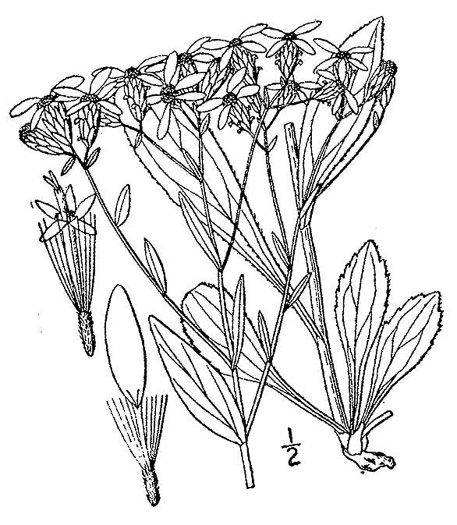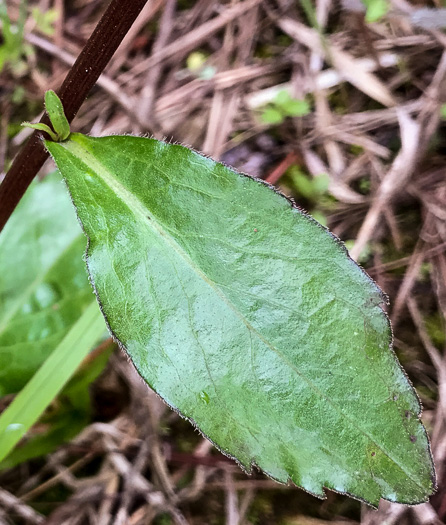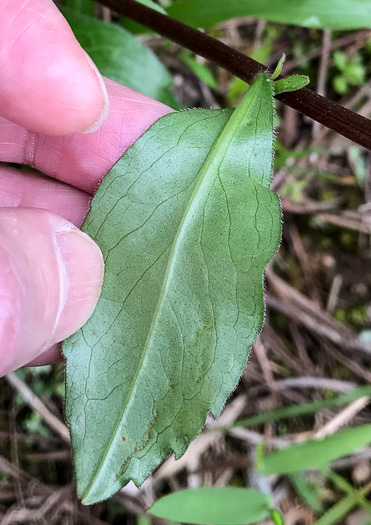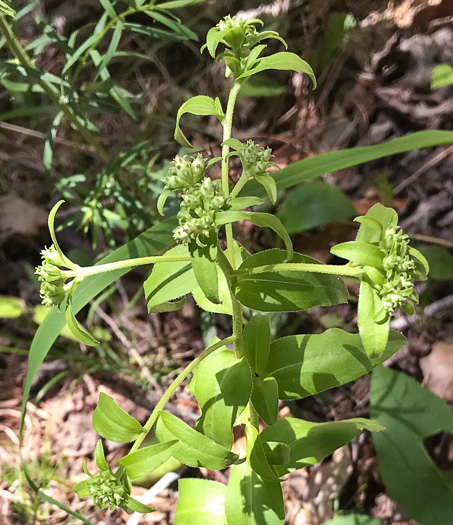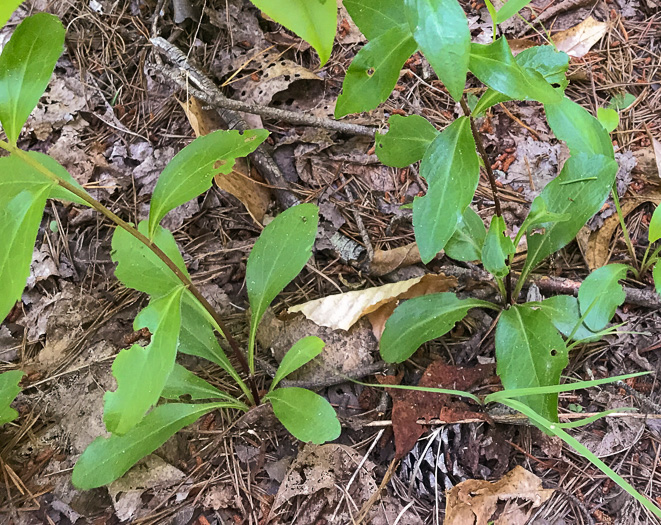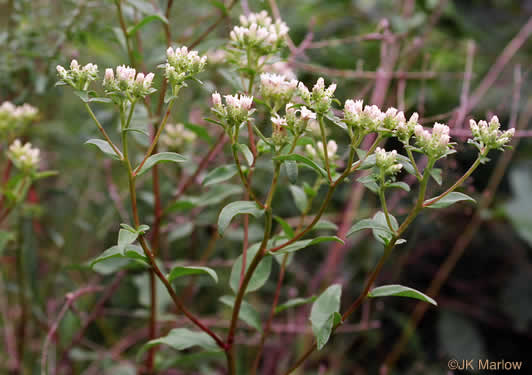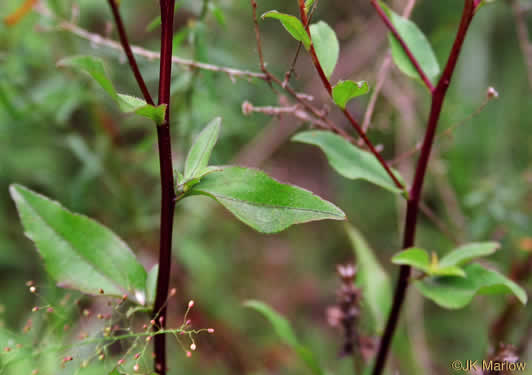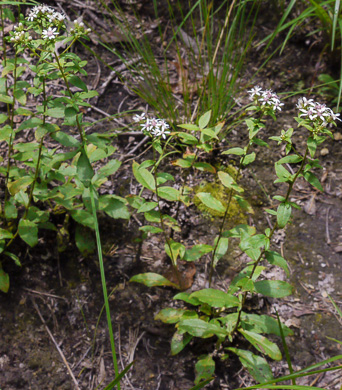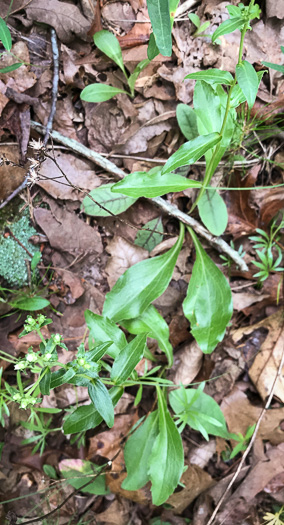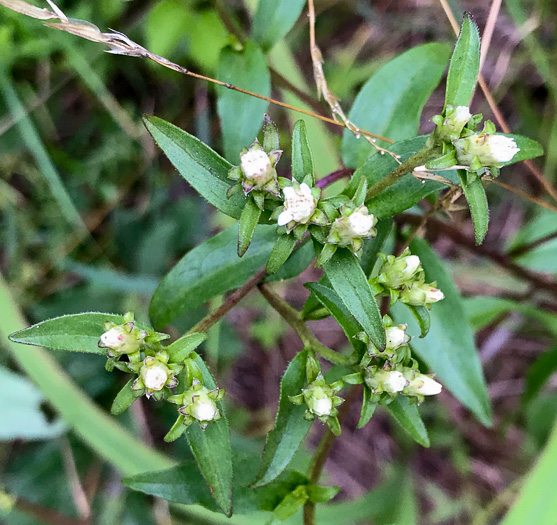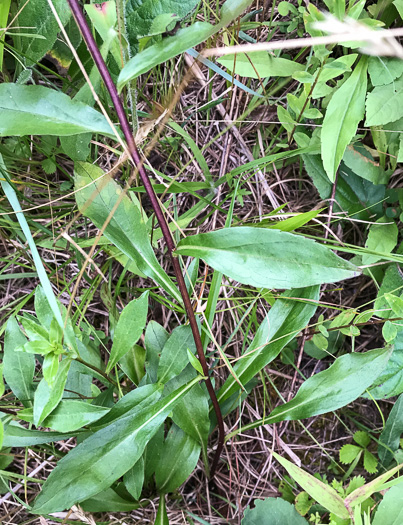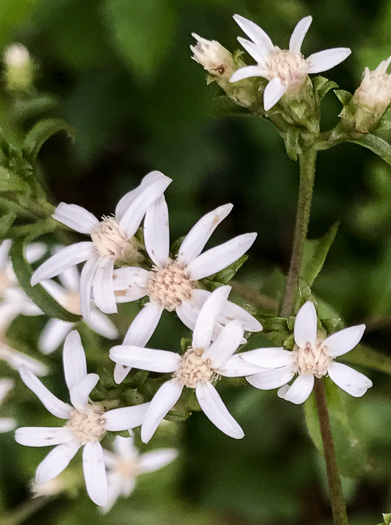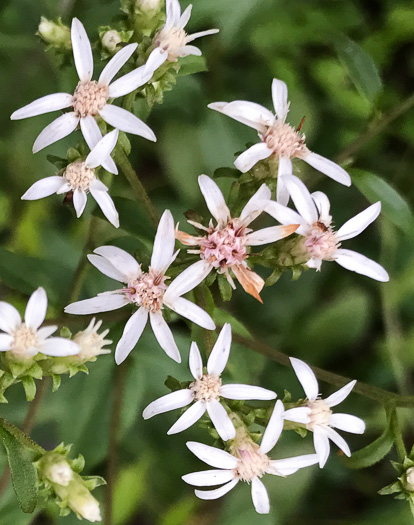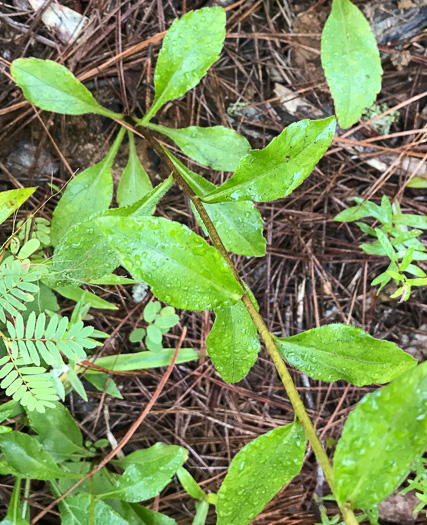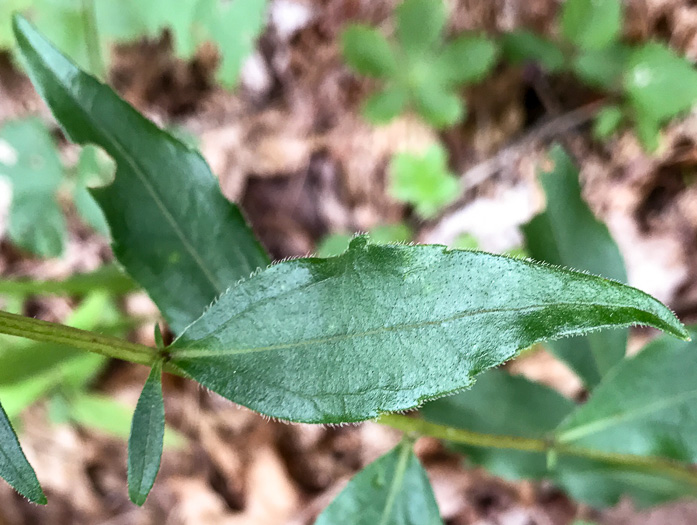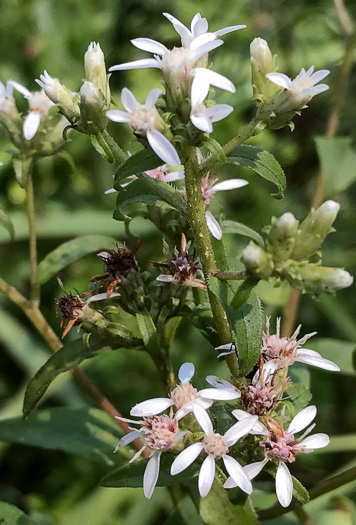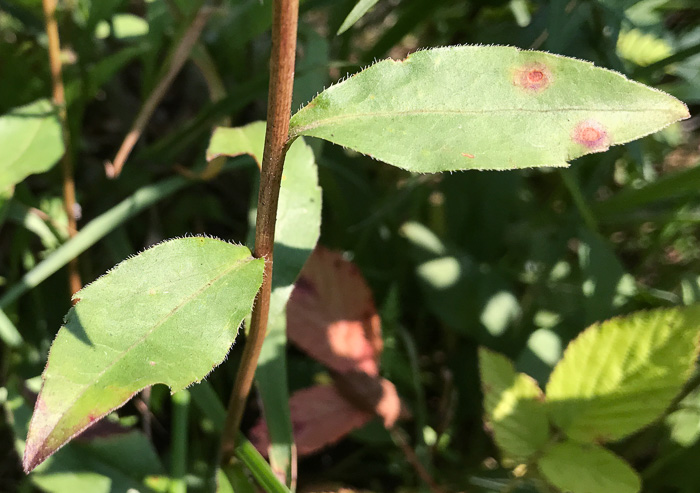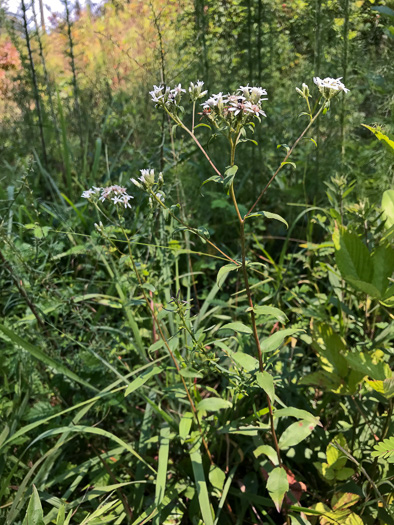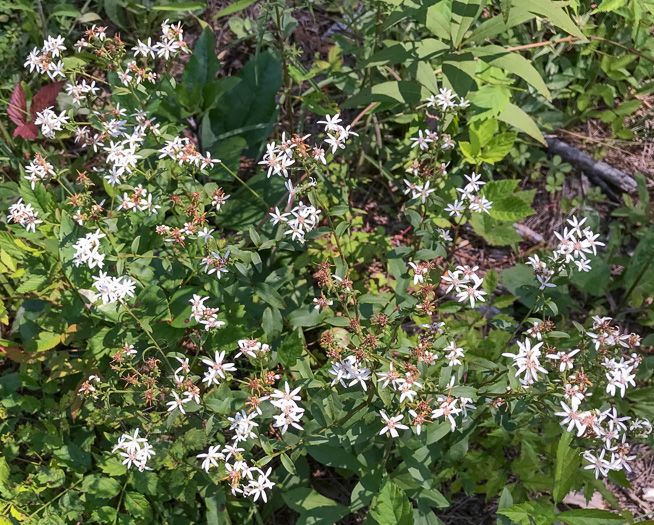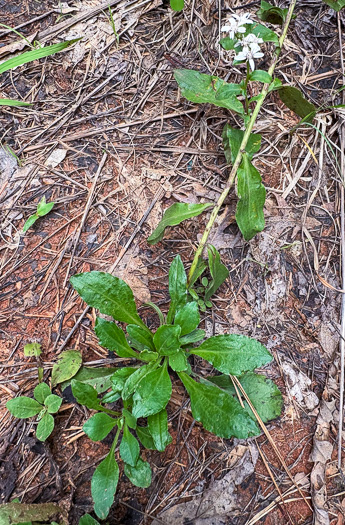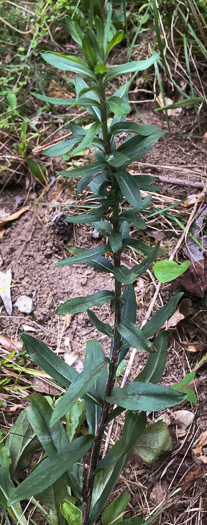Spermatophytes (seed plants): Angiosperms (flowering plants): Eudicots: Core Eudicots: Asterids: Campanulids: Asterales
WEAKLEY'S FLORA OF THE SOUTHEASTERN US (2/10/25):
Sericocarpus caespitosus
FAMILY
Asteraceae
Go to FSUS key
Dig deeper at SERNEC, a consortium of southeastern herbaria.
Note that S. asteroides was split by Nesom in 2021 into a revised S. asteroides and a new S. caespitosus. Read more at Vascular Plants of North Carolina.
Test-drive A Teaching Key to Asters.
Sericocarpus caespitosus Nesom, sp. nov., without stoloniform rhizomes, occurs inland from western New York to coastal counties of Alabama and Florida. Read more in Nesom 2021c.
INCLUDED WITHIN
PLANTS NATIONAL DATABASE:
Sericocarpus asteroides
FAMILY
Asteraceae
SYNONYMOUS WITH Floristic Synthesis of North America. BONAP (Kartesz, 2021)
Sericocarpus caespitosus
SYNONYMOUS WITH Sericocarpus asteroides (Asteraceae: Astereae), rhizomatous and colonial, and Sericocarpus caespitosus, sp. nov. (Nesom, 2021)
Sericocarpus caespitosus
INCLUDED WITHIN Flora of North America north of Mexico, vol. 19-20-21 (2006)
Sericocarpus asteroides
INCLUDED WITHIN VASCULAR FLORA OF THE CAROLINAS (Radford, Ahles, & Bell, 1968) 179-47-001:
Aster paternus FAMILY Asteraceae
INCLUDED WITHIN Manual of the Southeastern Flora (Small, 1933, 1938)
Sericocarpus asteroides
COMMON NAME:
Toothed Whitetop Aster
To see larger pictures, click or hover over the thumbnails.
JK Marlow jkm0506j_16
June Oconee County SC
The 1/2" heads are borne in flat-topped clusters, per Wildflowers of the Southern Mountains (Smith, 1998).
JK Marlow jkm0506j_18
June Oconee County SC
Leaves elliptic, lower with a petiole & a few teeth, upper smaller & sessile, per Wildflowers of the Southern Mountains (Smith, 1998).
JK Marlow jkm170624_242
June Oconee County SC
Sumter National Forest: Andrew Pickens Ranger District
JK Marlow jkm210610_1257
June Greenville County SC
Blackwell Heritage Preserve
The basal leaves and/or lower stem leaves larger than the upper stem leaves, per Weakley's Flora (2022).
JK Marlow jkm210619_1461
June Greenville County SC
Tall Pines Wildlife Management Area
Involucres narrowly campanulate to cylindric, upper bracts usually squarrose, per Vascular Flora of the Carolinas (Radford, Ahles, & Bell, 1968).
![]() COMPARE
involucral bracts of North American asters
COMPARE
involucral bracts of North American asters
JK Marlow jkm210619_1467
June Greenville County SC
Tall Pines Wildlife Management Area
The so-called White-topped Asters have about 5 rays and creamy-white disks, per Wildflowers of the Southern Mountains (Smith, 1998).
JK Marlow jkm210619_1469
June Greenville County SC
Tall Pines Wildlife Management Area
Rays broader than those of S. linifolius, per Wildflowers of Tennessee, the Ohio Valley, and the Southern Appalachians (Horn, Cathcart, Hemmerly, & Duhl, 2005).
JK Marlow jkm200703_6313
July Greenville County SC
Tall Pines Wildlife Management Area
Stems generally scabrous-puberulent in the inflorescence, per Manual of Vascular Plants of NE US & Adjacent Canada (Gleason & Cronquist, 1991).
WEAKLEY'S FLORA OF THE SOUTHEASTERN US (2/10/25):
Sericocarpus caespitosus
FAMILY
Asteraceae
INCLUDED WITHIN
PLANTS NATIONAL DATABASE:
Sericocarpus asteroides
FAMILY
Asteraceae
SYNONYMOUS WITH
Floristic Synthesis of North America. BONAP (Kartesz, 2021)
Sericocarpus caespitosus
SYNONYMOUS WITH
Sericocarpus asteroides (Asteraceae: Astereae), rhizomatous and colonial, and Sericocarpus caespitosus, sp. nov. (Nesom, 2021)
Sericocarpus caespitosus
INCLUDED WITHIN
Flora of North America north of Mexico, vol. 19-20-21
Sericocarpus asteroides
INCLUDED WITHIN
VASCULAR FLORA OF THE CAROLINAS (Radford, Ahles, & Bell, 1968) 179-47-001:
Aster paternus
FAMILY
Asteraceae
INCLUDED WITHIN
Manual of the Southeastern Flora (Small, 1933, 1938)
Sericocarpus asteroides
If a search such as "Carex leptalea var. leptalea" doesn't deliver the results you want, try "Carex leptalea".
Or, to minimize chances of a misspelling, try just "Carex le".
Less is more: If "pencil flower" doesn't deliver the results you want, try "pencil".

